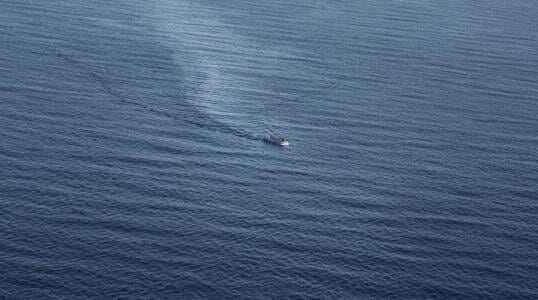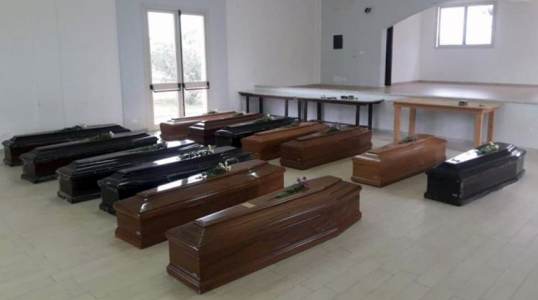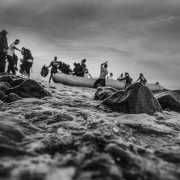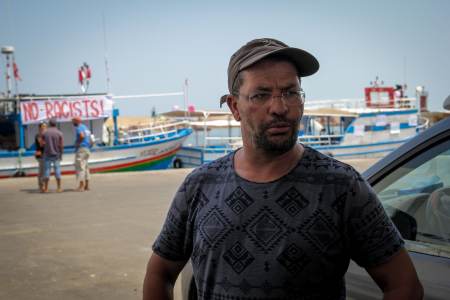Migrants, those bodies at the bottom of the sea and the safe routes that still do not exist
Redattoresociale.it – The latest tragedy that has extended this year’s black list of deaths at sea has reopened the discussion on the most dangerous route of the world, the one across the central Mediterranean. Yet, until today, there is no real alternative to it. The urge of Moas: “Have courage, create humanitarian corridors in order to avoid new casualties.”
11 2Foto from UNHCR
ROME – They have been found at the bottom of the sea hugging one another: mother and child had left Tunisia in order to reach Sicily and Europe. However, they did not make it, the boat on which they were travelling wrecked on October 7th. According to witnesses, on the boat there were at least 50 people cooped up on ten meters. 22 of them have been rescued by the Italian Coast Guard. Other 12 bodies have been found two days ago on the seabed in front of Lampedusa. The latest tragedy that has extended this year’s black list of deaths at sea has reopened the discussion on the most dangerous route of the world, the route across the central Mediterranean.
According to the latest report of the United Nations High Commissioner for Refugees (UNHCR), about 87.000 people reached Europe along routes across the Mediterranean from January until September 2019 – a decrease compared to the 102.700 people who reached Europe during the same period in 2018. However, more than thousand have died in an attempt to cross the sea. “Human trafficking cannot be prevented through borders but through safe and legal routes, on sea, in the Mediterranean, in the Aegean, in Bangladesh as well as in other parts of the world”, emphasizes Regina Catrambone, co-founder and director of Moas, the first NGO which started humanitarian operations to rescue people at sea in 2014. “Since we started in 2014, we always said: the only way to end this silent massacre are legal and safe routes”, she explains to Redattore Sociale. “From October 3rd 2013 until September 30th 2019, 19.000 people lost their lives in an attempt to cross the Mediterranean. How many more people will have to die before this massacre ends?”
According to Catrambone, migration flows cannot be stopped. “We may attempt to control them”, she says, “but they cannot be stopped. Otherwise, we would be tilting at windmills. Today, we have institutions which do not longer cooperate with NGOs, while the human traffickers coordinate well among each other. Here, we have to start over again: the coordination between NGOs, Coast Guard and all the other participants at sea that has been created 2014 during the operation Mare Nostrum and Mare Sicuro should be restarted. According to the co-founder of Moas, what is currently happening in Turkey and Syria will lead to further displacements. She adds, “war does not resolve anything, on the contrary it deteriorates the situation. In 2019, we learned and documented both the situation in Libya as well as the one in the Mediterranean. Today, we move forward by trials: it was clear that the Malta deal would not have lasted for long, since it is a deal that avoids for people to be stuck on a boat. The truth is that today, courage is needed. We need safe and legal routes through humanitarian corridors as well as private sponsors for study visa, evacuations from Libya and reallocations. We promoted the campaign ‘safe and legal route’ for years because already from the beginning we have seen the cruelty of the sea, but sea rescue cannot be the only thing that needs to be done. We need to coordinate also by using aerial technology to save lives. In order to spare people from tragic dying, today more than ever, we have to implement a real and safe alternative.”
© Copyright Redattore Sociale
Translated from Italian by Alma Freialdenhoven




